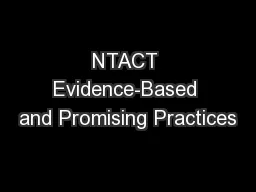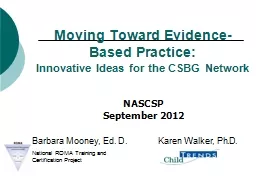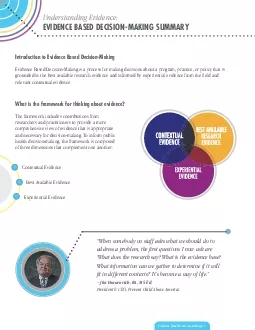PPT-NTACT Evidence-Based and Promising Practices
Author : jane-oiler | Published Date : 2017-06-30
Agenda PowerPoint Why we care about evidencebased practices EBPs Levels of Evidence Criteria for the different levels of evidence What this led to How to use the
Presentation Embed Code
Download Presentation
Download Presentation The PPT/PDF document "NTACT Evidence-Based and Promising Pract..." is the property of its rightful owner. Permission is granted to download and print the materials on this website for personal, non-commercial use only, and to display it on your personal computer provided you do not modify the materials and that you retain all copyright notices contained in the materials. By downloading content from our website, you accept the terms of this agreement.
NTACT Evidence-Based and Promising Practices: Transcript
Download Rules Of Document
"NTACT Evidence-Based and Promising Practices"The content belongs to its owner. You may download and print it for personal use, without modification, and keep all copyright notices. By downloading, you agree to these terms.
Related Documents














